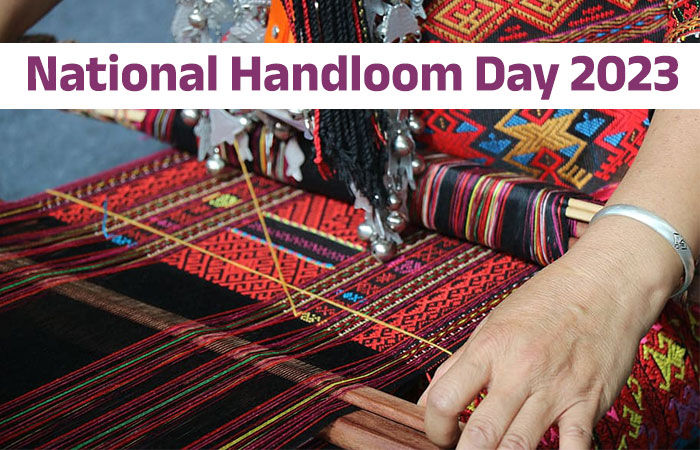National handloom day: Handloom industry dying in India?
In just a decade, India lost around eight lakh handloom workers.
Updated: Aug 7th, 2023

Celebrating the intricate threads that weave Gujarat’s rich cultural tapestry, National Handloom Day celebrated on Aug 7 unveils a kaleidoscope of artistry of the state.
Be it Ahmedabad’s Ashavali saree, Patan’s Patola, Surendranagar’s Tangaliya Shawl, Mandvi’s Mashru cloth, or Kutch’s Bhujodi weaving, Gujarat’s handloom heritage is a testament to its artisans’ skill. However, the state of affairs is a far cry from what the industry deserves.
As per a report published by the Press Information Bureau (PIB), in 2009-10, there were 43,31,876 handloom workers. The number declined to 35,22,512 in 2019-20. In just a decade, India lost around eight lakh handloom workers.
The government has also cut funds from the four schemes encouraging the handloom industry.
Gujarat’s handloom scene
408 artisans have quit the handloom industry in a decade, which means approximately 40 artisans quit the handloom industry every year across the state.
As per a survey conducted in 2019-20, a total of 10,601 artisans are associated with handloom businesses in Gujarat.
Around 2,000-2,500 families are associated with the handloom business in Ahmedabad. While, in Amraiwadi, weavers at 10-15 handloom factories are making sheets, napkins, curtains, towels, sofas, and car cover sheets.
Challenges to the handloom industry
Usually, handloom items are costlier due to the long and demanding production processes for the end result and high goods and service tax (GST) rates.
On the contrary, items made with power loom machines are easier and relatively cheaper to create. Customers, on the other hand, prefer low-priced goods because they cannot afford expensive products, even if they are of high-quality.
Most of the time, the buyers opting for handlooms are regular customers while new buyers usually refrain from buying handlooms.
Duplicates plaguing the industry
Another challenge presents in term of duplicates. The markets are full of duplicates, copying famous handloom designs. Customers often fail to distinguish between real and duplicate products and end up paying high prices for duplicate products.
India, where the handloom industry ranked second after the agricultural industry, is now losing its charm.
Where did it all start?
National Handloom Day takes us back to one of our history’s most significant episodes, the Swadeshi movement of 1905. The movement was aimed at boycotting British goods and promoting Indian-made products and handloom textiles.
The Swadeshi movement officially started in Kolkata on Aug 7, 2023. The key people who laid the very first foundation of this movement were Bal Gangadhar Tilak, Bipin Chandra Pal, Lala Lajpat Rai, Aurobindo Ghosh, VO Chidambaram Pillai, and Babu Genu.
For more such updates and news on the go, follow us on




